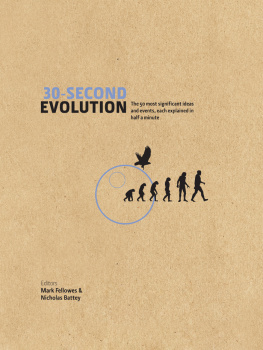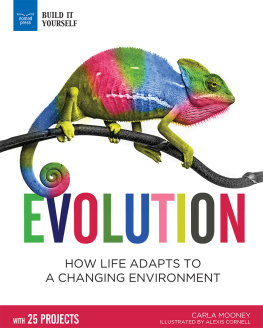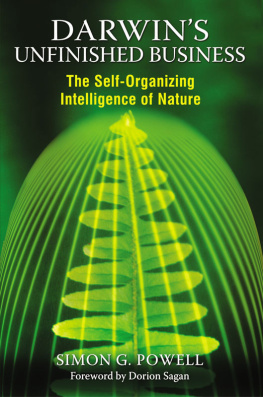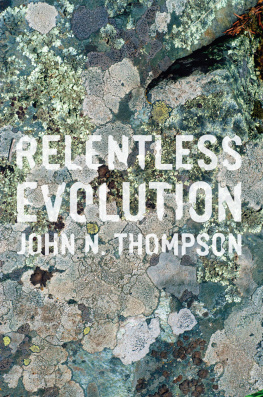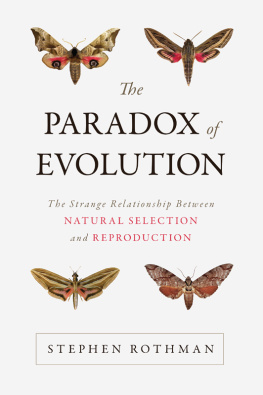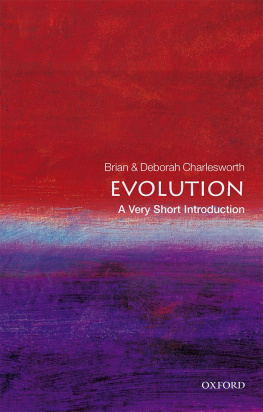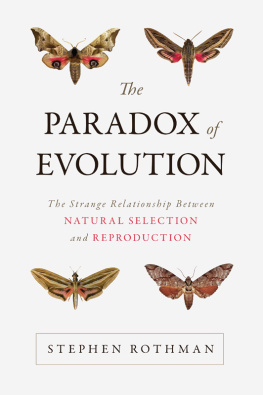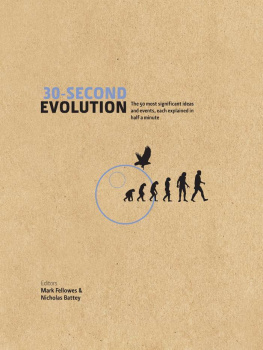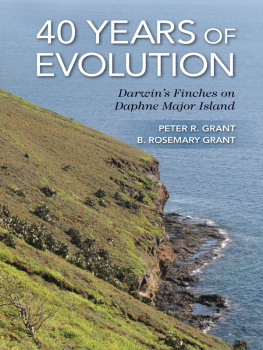30-SECOND
EVOLUTION
The 50 most significant ideas and events, each explained in half a minute
Editors
Mark Fellowes
Nicholas Battey
Contributors
Nicholas Battey
Brian Clegg
Isabelle De Groote
Mark Fellowes
Julie Hawkins
Louise Johnson
Ben Neuman
Chris Venditti

Adapt or die: its natures most famous imperative. But how does evolution actually happen? Its too slow to see, but its going on all around you, all the time. Even if youre on top of the key terms variation? Natural selection? Parent-offspring conflict? you still need some context to put them in. From populations to speciation and polymorphism to evolutionary psychology, heres the onestop source for all you need to know.
30 Second Evolution unlocks the laboratory of life, dissecting it into the 50 most significant topics that provide the missing links to understand the natural worlds four-billion-year ancestry and the process of natural selection in which species either adapt in myriad ways mutation, ingenuity, and intelligence to meet the challenges of a changing environment, or die. Unravel the development of living organisms, at micro and macro level from genes to geniuses.
CONTENTS
INTRODUCTION
Nicholas Battey & Mark Fellowes
Evolution, caused by the linked processes of natural and sexual selection, accounts for the diversity and interrelationships of all life forms on planet Earth. Although evolution is a theory in the sense that our understanding of it will be modified and developed as scientific understanding grows, it is also much more than that: it is a way of thinking that is fundamental to modern biology and natural history. From the development of language to practical species conservation, evolution is the core concept.
Evolution also accounts for human origins and so conflicts with some religious explanations. It therefore has a colourful history. Charles Darwins On the Origin of Species sparked heated debate and in 1860 Bishop Samuel Wilberforce (Soapy Sam for his unguence) asked his debating opponent Thomas Huxley (Darwins bulldog) Is it on your grandmothers or your grandfathers side that you are descended from an ape? To which Huxley replied: I would rather be descended from an ape than a man who uses his great faculties and influence for the purpose of ridicule.
More recently the claims of sociobiology to provide explanations for many aspects of human behaviour based on evolutionary adaptation have been greeted with fierce opposition from some quarters, while the use of the word selfish by Richard Dawkins in his popularization of evolutionary explanations for altruism added more fuel to the fires of controversy. And eugenics, the idea that human stock can be improved by selective breeding, is an offshoot of evolutionism which has dark associations with the racist programmes of Nazi Germany.
Yet these controversies break out almost exclusively where evolutionary thinking is applied to humans and create a distorted picture of its significance. Evolution addresses the diversity of all life forms plant, animal, fungal, bacterial and protist. It offers a coherent basis for understanding how the 8.7 million (or perhaps many, many more) species now present on the planet have come into being; through knowledge of population genetics, speciation processes and extinctions it provides not just an explanation of past events but predictions of future chapters in the story of life. These help us understand that every species is a chance event, a combination to be cherished as a never to be repeated expression of the incredible power of evolution. It is evolution acting through natural and sexual selection that has moulded life into the exuberant diversity of form and function that we see around us today.
The evolution of life has depended on one ingredient more than any other: time. The scale of evolutionary time is hard for us to grasp because we naturally think in terms of our own lifespan, the rise and fall of nations and empires or at most the millennia separating us from the ancient civilizations. Yet evolutionary processes typically occur over millions of years (about 7 million years in the case of the human species) or hundreds of millions of years (dinosaurs of one sort or another were around for 200 million years). The diagram on the following page summarizes the geological eras, periods and epochs referred to extensively in the chapters of this book. The more complex life forms evolved after the Cambrian explosion of life (about 550 million years ago), but about 4,000 million years separate the formation of our planet from the Cambrian epoch, time that was vital to the evolution of the basic elements of life (RNA, DNA, proteins, cells). The diagram also shows the ages of dominance of animal groups, but dont forget that plants were also evolving: during the Carboniferous, vast forests of enormous lycopods, ferns and horsetails flourished; during the Cretaceous, angiosperms (flowering plants) became prominent as well as the placental mammals.
But this is not to say that evolution acts at this pace, more that this is the scale on which we can see the grand spectacle of evolution unfold. Just as mountains are constantly formed by great tectonic movements and constantly eroded by the elements, evolution and extinction are always at work; we only see the results given the perspective of time. We can, in fact, witness natural selection at work all around us. The evolution of resistance to antibiotics, or of insects to insecticides, is well known. There are many other examples, from the Galpagos finches to the apple maggot fly that show that natural selection is a part of life, and, with time, may give rise to new species. But hand in hand with evolution goes extinction, and given our own species malign influence there is no doubt that the creativity of natural selection is now unable to keep pace with our erosion of the Earths diversity of life.

Our strategy here has been to view evolution from seven different perspectives. In the History of Evolution we explore how the modern theory came about, beginning with Darwins explanation of species origins through natural selection, and incorporating the growing understanding of genes as both agents of stable inheritance and individual variability. In Origin of Species modern views of speciation and its genetic underpinnings are described, while Natural Selection considers the way genes behave in populations, and populations adapt in response to selection pressure. Evolutionary History & Extinction focuses on the geological record and what it tells of lifes history; Evolution in Progress describes how evolution works, including contemporary examples such as industrial melanism in moths and explanations for apparently non-Darwinian altruism. Sex allows alleles to be exchanged, death is the means of winnowing genotypes; Sex & Death looks at how these key events work within an evolutionary framework. The final chapter, Humans & Evolution, describes how humans evolved and speculates on our evolutionary future, which paradoxically may involve an escape from natural selection.
Evolutionary thinking has itself evolved to such an extent that it finds its way into almost all aspects of life. To help capture this diversity each entry in this book is accompanied by a pithy encapsulation (the 3-Second Thrash) and something a bit more speculative the 3-Minute Thought. This might be a slight mutation of normal thinking, a meme thrown into the mix of ideas that transmit from mind to mind but are rarely, if ever, reproduced as faithfully as genes.

